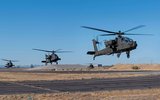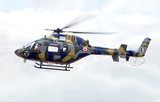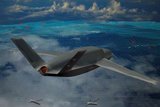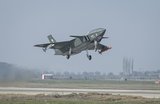Germany announces phasing out of Tiger combat helicopters by 2038, introducing H145M fleet
Berlin has been consistently frustrated by the Tiger's limited operational availability due to technical issues. (Photo: Bundeswehr)
In an announcement made on Saturday, Germany's defence ministry revealed its plans to gradually phase out its Tiger combat helicopters by 2038. The fleet will be replaced over time with H145M light military helicopters, manufactured by Airbus, just like the Tiger.
The decision was not unexpected, as Germany had withdrawn from a multinational helicopter modernisation programme years ago.
In contrast, France and Spain agreed to participate in 2022. Berlin has been consistently frustrated by the Tiger's limited operational availability due to technical issues.
A spokesperson from the German MoD confirmed the phased retirement of the Tiger fleet by 2038, unless additional measures are taken. This statement aligns with a report by Sueddeutsche Zeitung.
The ministry thoroughly explored various scenarios and concluded that participating in the Mk III programme to modernise the helicopters would entail excessive risk in terms of cost and timely execution. Consequently, Germany opted not to participate.
Instead, the ministry intends to procure H145M light military helicopters from Airbus to ensure future compliance with its NATO obligations.
The spokesperson did not disclose specific details regarding the number of helicopters to be acquired or the associated costs.
The spokesperson further stated that the ministry plans to present the proposed agreement to the budget committee of Parliament for approval before the end of this year.
Related Equipment in Defence Insight
More from Air Warfare
-
![Airbus MQ-72C Lakota Connector progress on track ahead of pending USMC decision]()
Airbus MQ-72C Lakota Connector progress on track ahead of pending USMC decision
The MQ-7C uncrewed aircraft is currently undergoing further internal flight tests ahead of a government test event anticipated for next year.
-
![November Drone Digest: GA-ASI eyes Middle East for Gambit, Edge Group unveils new UAVs]()
November Drone Digest: GA-ASI eyes Middle East for Gambit, Edge Group unveils new UAVs
In November 2025, GA-ASI unveiled a new Gambit variant, the Gambit 6, and appears to be pitching the aircraft series to various customers in the Middle East, which is a fast-emerging CCA market. The Dubai Airshow also saw the unveiling of various Emirati aircraft from Edge Group.
-
![Baykar’s Kizilelma drone makes progress with first air-to-air kill]()
Baykar’s Kizilelma drone makes progress with first air-to-air kill
This test is the latest milestone achieved by the indigenous drone, destroying a target using a beyond-visual-range missile.
-
![Lockheed plans further solid rocket motor investment in Europe and Middle East]()
Lockheed plans further solid rocket motor investment in Europe and Middle East
The company has worked to heavily invest in its solid rocket motor production capabilities, both in the US and internationally, to build a strong supply chain to meet growing demand.
-
![How the US Air Force plans to use data analytics to enhance the roles of airmen and assets]()
How the US Air Force plans to use data analytics to enhance the roles of airmen and assets
The USAF has allocated nearly US$500 million to further the deployment of this type of technology in FY2026. It envisions using analytics to enhance sensors, weapons, missiles and human performance.























